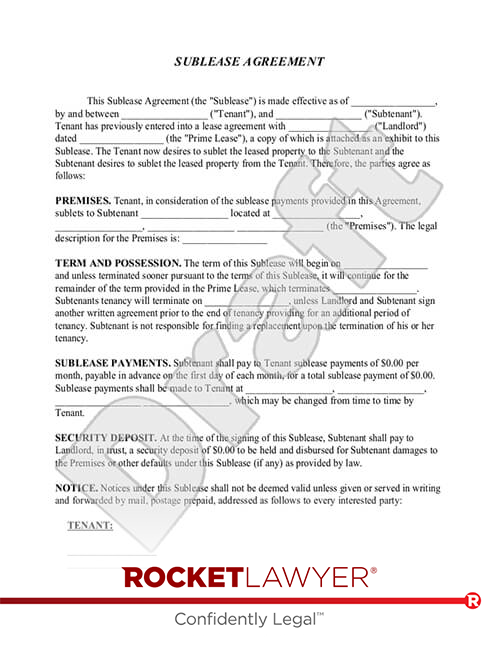Sublease Agreements
A residential sublease states the agreement between a tenant and a subtenant, the person who will take over the original lease for a set length of time for set periodic payments. The original tenant becomes the landlord, and the subtenant becomes the tenant.
Common reasons for an original tenant to sublease include:
- Moving for a short period of time for temporary work
- Traveling for a few months without having to pay rent
- Adding a roommate to the rental lease agreement
States with Sublease Laws and Proceedures
Seventeen states have tenant-friendly laws regarding residential subleasing. They range from Alaska, where the subtenant must apply directly to the landlord, who must reply in writing within 14 days and provide a valid reason if rejecting the subtenant, to Virginia, where the landlord only has 10 days to accept or reject a request from the original tenant or have the request automatically approved.
Other states with residential subleasing laws are:
- Arkansas
- California
- Colorado
- Delaware
- Florida
- Hawaii
- Idaho
- Missouri
- Nebraska
- Nevada
- New York
- Pennsylvania
- South Dakota
- Texas
- Utah
You can find more information about your state?s subleasing laws on its government website. Tenants who live in a state that do not have laws regarding subleasing should check the original residential lease agreement and talk to their landlord about subleasing options.
Using a Sublease Agreement
As an original tenant, if you wish to sublease a rental property or room under the same terms as the original lease agreement, a simple sublease may be appropriate. You also may want to do the following as part of the subleasing process:
- Run a credit check on the potential subtenant.
- Collect a security deposit from the subtenant; state law and the original rental lease agreement may dictate the maximum amount allowed and to whom it must be paid.
- Take photos of the rental property prior to subtenant move-in.
- Provide subtenant with a renter's inspection worksheet.
Whether you are the property owner in a subleasing situation or the tenant-turned-landlord, fully understanding the terms and conditions of the lease and sublease agreements, as well as the state law governing the practice, results in the best possible chance for a successful subleasing.
Please note: This page offers general legal information, not but not legal advice tailored for your specific legal situation. Rocket Lawyer Incorporated isn't a law firm or a substitute for one. For further information on this topic, you can Ask a Legal Pro.
